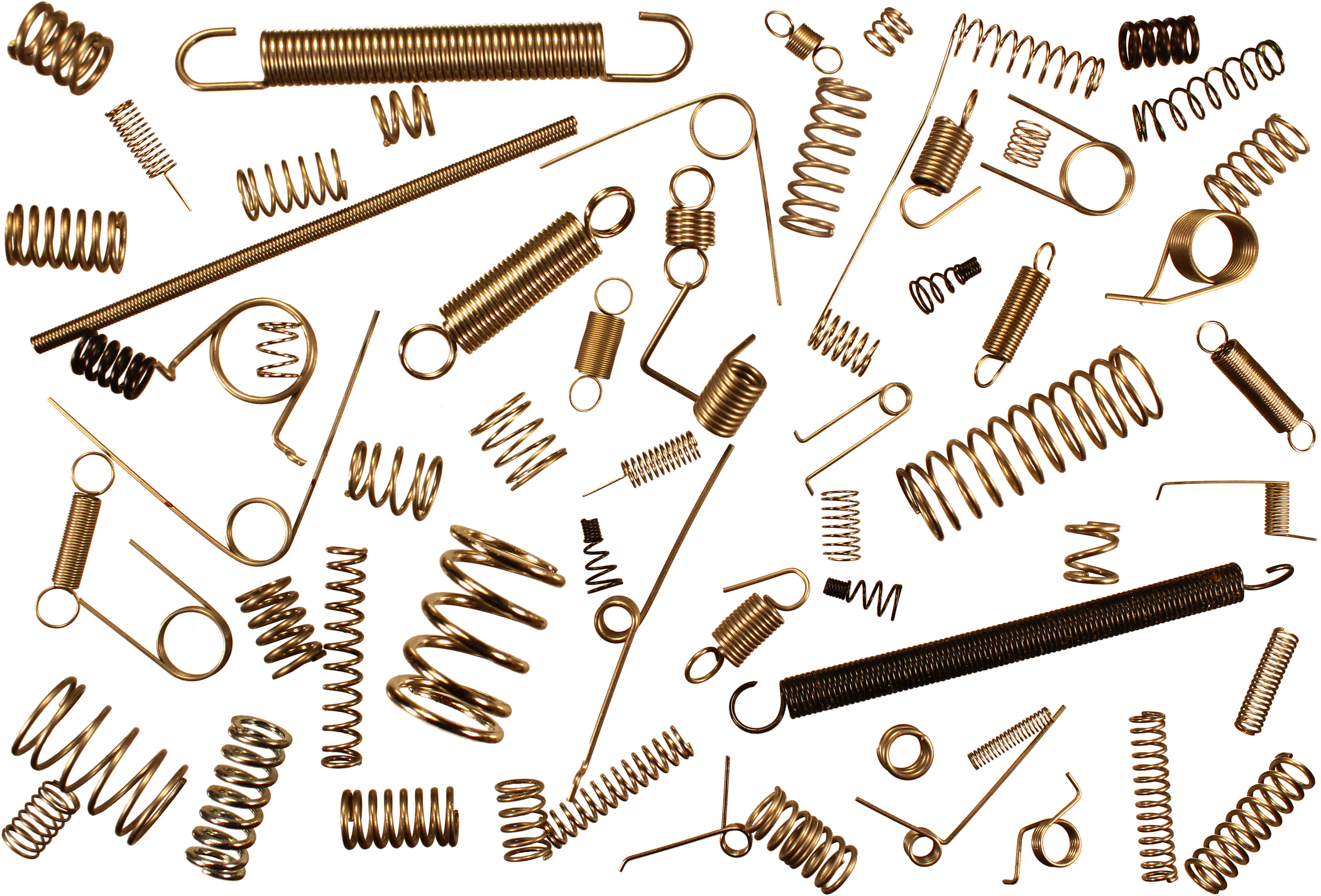Key qualities of springs
Contents |
[edit] Introduction
There are many different types of springs used throughout the design and engineering world, however, they all share common properties which make them perfect for projects. However, each spring can possess these properties in very different ways. Knowing how they do so is vital as these differences can vastly affect work.
What are the key qualities of springs that should be borne in mind when designing for a building project?
[edit] Torsion
Torsion is the twisting of an object as a result of torque being applied, in springs this allows them to store rotational energy. A torsion spring follows Hooke’s law, which states that force needed to extend a spring by some distance is proportional to this distance.
However, Hooke’s law must eventually fail once force exceeds a certain limit. Knowing what this limit is for particular needs becomes an integral part of any project.
This coiled spring was first used in door locks during the 15th century but soon became prominent in clock-making, as the first mechanical clock was also created that century with the help of springs.
Springs with high torsion ability can be used in clothes pins, cameras and a weight support for heavy moving objects like garage doors.
[edit] Compression
There are also spring with a distinctive helical shape capable of withstanding compressive forces. This is the most common spring type. A compression spring, when pushed by a load will always push back in order to try and reshape itself into its original form. Not only do they offer resistance to this force, but they also the most efficient way to store the energy received from this force.
When experiencing full load, the spring experiences stress and is in full torsion as a result. The stress is experienced more typically at the top of the spring, but operating stress is experienced throughout the spring depending on the spread of the load.
Installed at full stress in most cases, compression springs can take a significant amount of stress without experiencing damage.
Typically used in vehicle suspension, toys and spring mattresses or other areas that need to absorb impact.
[edit] Tension
Tightly wound coils designed to work with tension, these springs stretch to a certain length as the load is applied. The coils, when unloaded, are touching and only part when a load is applied. When the load pulls, the spring tries to return to its more compressed form and this causes the springing action until the force ceases and it returns to its original form.
One of the widest uses of all springs, found in industrial robots all the way to locks and trampolines.
[edit] Related articles on Designing Buildings Wiki
Featured articles and news
Infrastructure that connect the physical and digital domains.
Harnessing robotics and AI in challenging environments
The key to nuclear decommissioning and fusion engineering.
BSRIA announces Lisa Ashworth as new CEO
Tasked with furthering BSRIA’s impressive growth ambitions.
Public buildings get half a million energy efficiency boost
£557 million to switch to cleaner heating and save on energy.
CIOB launches pre-election manifesto
Outlining potential future policies for the next government.
Grenfell Tower Inquiry announcement
Phase 2 hearings come to a close and the final report due in September.
Progress from Parts L, F and O: A whitepaper, one year on.
A replicated study to understand the opinion of practitioners.
ECA announces new president 2024
Electrical engineer and business leader Stuart Smith.
A distinct type of countryside that should be celebrated.
Should Part O be extended to existing buildings?
EAC brands heatwave adaptation a missed opportunity.
Definition of Statutory in workplace and facilities management
Established by IWFM, BESA, CIBSE and BSRIA.
Tackling the transition from traditional heating systems
59% lack the necessary information and confidence to switch.
The general election and the construction industry
As PM, Rishi Sunak announces July 4 date for an election.
Eco apprenticeships continue help grow green workforce
A year after being recognised at the King's coronation.
Permitted development rights for agricultural buildings
The changes coming into effect as of May 21, 2024.






















